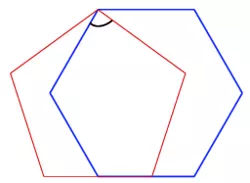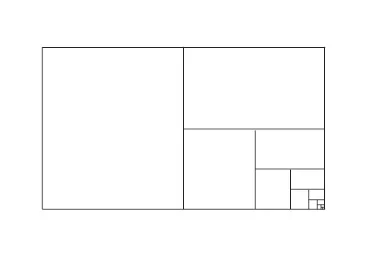Week 1 – September 27, 2011
Host: Dr. Maria Wesslen
Topic: Welcome to Math Circles!
In the first week we will work on a mix of problems and puzzles. There will also be some group challenges, to help everyone get to know each other.
Here are a couple of problems which you can try before the first meeting, if you like:
1. Suppose you have X coins. One of them is heavier than the others (all the other coins weigh the same). You have a balance scale which you can use to compare the weight of two groups of coins, but the scale does not tell you the exact weight. You know that if you are very wise, you can use the scale only twice to figure which coin is the heavier one. What is the largest possible value for X?
2. Have a look at this triangle and try to find some patterns. If the rows are continued in the same way, what number will be directly below 400? (Of course you should not write out all these rows; there is a much better way…!)
|
|
|
|
1 |
|
|
|
|
|
|
2 |
3 |
4 |
|
|
|
|
5 |
6 |
7 |
8 |
9 |
|
|
10 |
11 |
12 |
13 |
14 |
15 |
16 |
About the host:
Most sessions will be hosted by Dr. Maria Wesslen. (Even when there is a guest host Maria will be present as well.) Originally from Sweden, Dr. Wesslen is a course instructor in the Department of Mathematical and Computational Sciences at UofT Mississauga. This year she teaches Calculus and a course on Group Theory. She holds a teaching certificate from King’s College London, completed undergraduate studies at Imperial College London and graduate studies at University of Toronto. Her area of interest is Lie Algebras and especially Representation Theory of Lie Algebras.
Week 2 – October 4, 2011
Host: Dr. Maria Wesslen
Topic: Postage problems
Here is a problem for you to think about: Felix is at a summer camp and wants to send a post card to his parents. The postage costs 27 cents. He has a huge pile of 5 cent stamps and a fairly large pile of 8 cent stamps. Can he make exactly 27 cent postage, using these stamps?
If so, how? If not, why not? We will try to generalize this problem, and think about which kinds of stamps can be used to make what postages.
Week 3 – October 11th
Host: Dr. Stephen Tanny
Topic: Combinatorial Counting: The Meaningful Way to Count
What is the sum of all of the binomial coefficients in the nth row of Pascal's triangle? How do you prove your answer is correct?
Suppose you have to cover a 1xn board with squares and dominoes.In how many ways can this be done?
I will illustrate a very nice way of counting that makes the answers to these and many other similar questions very meaningful.
About the host:
Dr. Stephen Tanny is an Associate Professor in the Department of Mathematical and Computational Sceinces at UofT Mississauga and in the Department of Mathematics at the St. George Campus of UofT. His field of research is Enumerative Combinatorics; most recently he has focused on the study of nested recursions. This semester he teaches Introduction to Combinatorics and Calculus for Life Sciences.
Week 4 – October 18, 2011
Host: Abdul Ayoub
Topic: Probabilities
About the host:
Abdul Ayoub is a fourth year mathematics student and teaching assistant at UofT Mississauga. Apart from taking mathematics and statistics courses, he has worked on several research projects with faculty her at UTM. For example a project on Lie Algebras with Dr. Shay Fuchs, a physics research project on Radon and Radioactivity with Dr. Wagih Ghobriel and a project in Differential Geometry and Relativity Theory under the supervision of Prof. Yael Karshon and Dr. Shay Fuchs.
Mr. Ayoub also volunteers at the Robert Gillespie Academic Skills Centre, where he is involved with the Peer Facilitated Group Study program. In the summer of 2010 Abdul went to a MathFest conference in Pittsburgh, where he (among many other things) participated in a session by the National Association of Math Circles.
Week 5 – October 25, 2011
Host: Dr. Maria Wesslen
Topic: Making 3D objects from 2D shapes, and other geometrical puzzles.
In this week’s Math Circle, we will explore 2D shapes such as pentagons and hexagons etc. and see if/how they can be used to make 3D objects. We will try to prove some of our findings and we will consider some other geometrical problems we well.
Here is a warm up problem you can get started with right away (although it might be pretty tricky…):

In this diagram, a regular hexagon and a regular pentagon overlap each other. How large is the marked angle?
Week 6 – November 1, 2011
Host: Dr. Shay Fuchs
Topic: Graph Theory
Dr. Fuchs hosted a Math Circle on Graph Theory in the spring of 2011, but there are so many other interesting problems to explore that there will be a follow up session. Regardless of if you have heard of Graph Theory before or not, it should be a lot of fun!
About the host:
Dr. Shay Fuchs is a Lecturer in the Department of Mathematical and Computational Sciences at UofT Mississauga. His area of interest is Symplectic Geometry and Topology. In 2011-2012 he is teaching Introduction to Mathematical Proofs, Calculus for Life Sciences and Introduction to Topology. Dr. Fuchs previously taught Mathematics at High Schools in his home country of Israel. At UofT Mississauga, Dr. Fuchs is also involved in helping interested students prepare for the Putnam Competition. This is an annual competition where University and College students from across North America compete to solve challenging mathematics questions.
Week 7 – November 8, 2011
Host: Maria Wesslen
Topic: Perfect Squares and Picture Proofs
What is 1+ 2 + 3 + …. + 2010 + 2011 + 2010 + …. + 2 + 1 ?
What about 1+ 2 + 3 + …. + 1999 + 2000 + 1999 + …. + 2 + 1 ?
Is there a nice way to illustrate this with a convincing picture?
We will think about ways to prove some well known and some not so well known formulas with pictures. Here is another problem we will discuss:
The total area of this rectangle is 1 unit. Suppose that you divide it in half, then divide one of the halves in half, then divide one of those pieces in half…… etc. What formula does this picture prove?

Week 8 – November 15, 2011
Host: Dr. Tanya Yarmola
Topic: Parity
The questions this week cover a number of different topics. But they all have something in common: they can be solved using parity.
Week 9 – November 22, 2011
Host: Mariana Huerta Marin
Topic: A mix of interesting and challenging problems.
Week 10 – November 29, 2011
Host: Dr. Maria Wesslen
Topic: Game Theory
In the last week before the holidays we will play and analyze some mathematical games. Is there a particular strategy that will ensure a win? How can we find that strategy?
